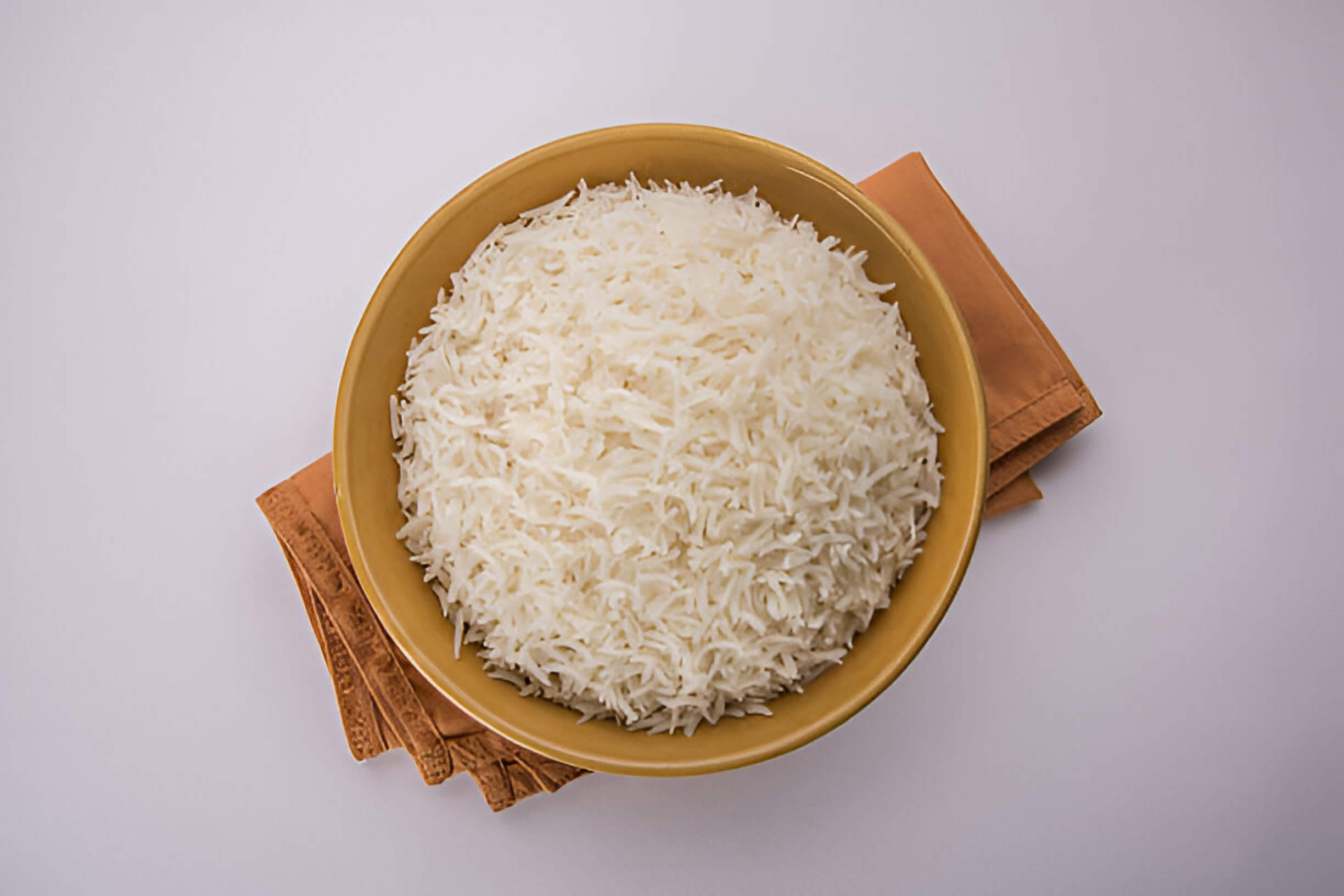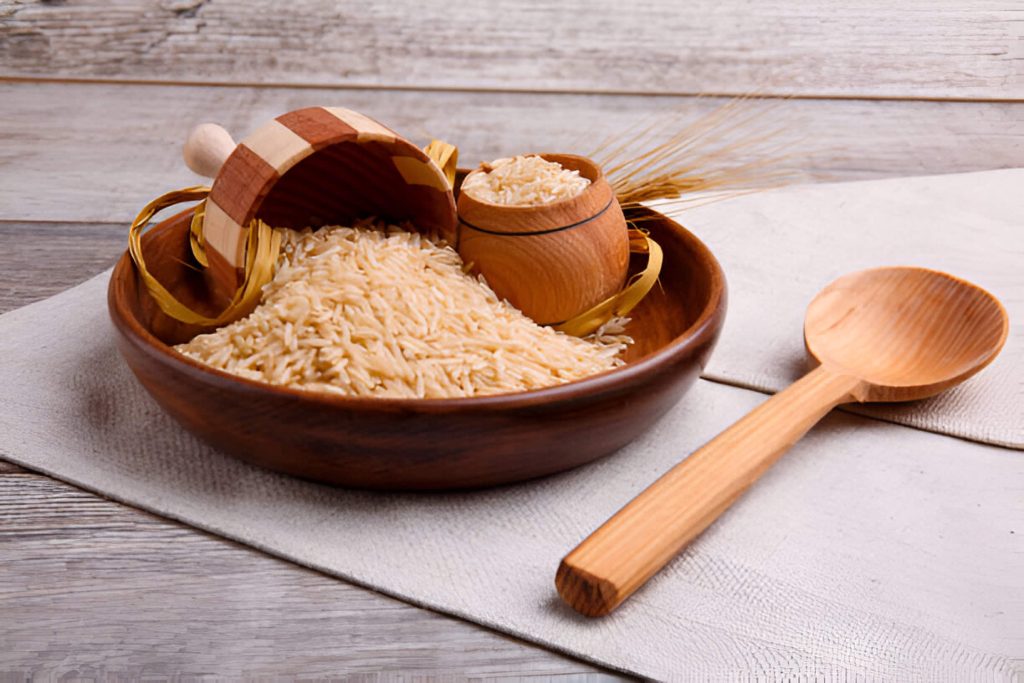
Basmati rice, a premium variety from the Indian subcontinent, is prized for its aroma, flavor, and long grains. This guide explores how to prepare, cook, and serve basmati rice, offering techniques and tips for perfect results.
What Makes Basmati Rice Special?
Basmati rice, a true treasure of South Asian cuisine, holds a special place in the hearts of food lovers worldwide. This exquisite long-grain rice, primarily cultivated in India and Pakistan, is renowned for its distinctive characteristics that set it apart from other varieties.
The moment you open a bag of basmati rice, you’re greeted by its enchanting aroma – a fragrance that’s both nutty and floral, reminiscent of warm summer evenings. This aromatic quality is one of the key features that make basmati so beloved. As it cooks, the enticing scent fills your kitchen, building anticipation for the delightful meal to come.
Beyond its aroma, basmati rice is cherished for its slender, elongated grains. When cooked properly, these grains separate beautifully, creating a light and fluffy texture that’s a joy to eat. Each grain maintains its individual character, never clumping together, allowing it to perfectly complement a wide array of dishes.
Whether you’re enjoying it as part of a traditional Indian biryani or pairing it with your favorite curry, basmati rice brings a touch of elegance to every meal. Its subtle, nutty flavor enhances without overpowering, making it a versatile staple in kitchens around the world.
As we appreciate the unique qualities of basmati rice, we’re reminded of the rich cultural heritage it represents. This humble grain connects us to centuries of culinary tradition, inviting us to savor not just its taste, but also the stories and history it carries with each delicious bite.
Preparing Your Basmati Rice

Properly preparing basmati rice before cooking is crucial for achieving the perfect texture and flavor. Begin by thoroughly rinsing the rice to remove excess starch. Place the rice in a fine-mesh strainer and rinse under cold water until the water runs clear, typically taking about 1-2 minutes. This step helps prevent the rice from becoming sticky during cooking.
After rinsing, soaking basmati rice is highly recommended. Transfer the rinsed rice to a bowl and cover it with cold water. The ideal soaking time for basmati rice is 30 minutes to 1 hour, though some prefer to soak it for up to 4 hours. Soaking allows the grains to absorb water, resulting in more evenly cooked and elongated grains.
During the soaking process, the rice will continue to release starch, further improving its final texture. Once the soaking time is complete, drain the rice and it’s ready for cooking. This pre-cooking preparation ensures that your basmati rice will turn out fluffy, aromatic, and perfectly separated when served.
The Right Ratio of Water and Rice for Cooking Basmati
When it comes to cooking perfect basmati rice, achieving the right rice to water ratio is crucial. The general rule of thumb for the basmati rice to water ratio is 1:1.5, meaning for every cup of rice, you’ll need 1.5 cups of water. This ratio ensures that the rice absorbs the cooking liquid properly, resulting in fluffy, separate grains.
Measuring rice accurately is essential for consistent results. Use a standard measuring cup for dry ingredients to measure your rice, and a liquid measuring cup for the water. Remember that different types of rice may require slightly different ratios, but this 1:1.5 ratio works well for most basmati varieties.
The absorption method is the most common technique for cooking basmati rice. In this method, the rice absorbs all the cooking liquid during the cooking process. Once you’ve added the correct amount of water to your rice, bring it to a boil, then reduce the heat to low and let it simmer covered for about 15-20 minutes. After cooking, let the rice rest for 5-10 minutes to allow any remaining moisture to distribute evenly.
Cooking Methods (Stovetop, Rice Cooker, and Instant Pot)
When it comes to cooking basmati rice, there are several methods to choose from, each with its own advantages. The traditional stovetop method offers precise control over the cooking process. Begin by rinsing the rice, then combine one part rice with 1.5 parts water in a pot. Bring to a boil, reduce heat, and simmer covered for about 15-20 minutes until the water is absorbed.
Rice cookers provide a convenient, hands-off approach. Simply add rinsed rice and water in the correct ratio (usually 1:1 for basmati), close the lid, and press start. The cooker will automatically switch to warm mode when the rice is done, typically in 20-30 minutes.
For those seeking speed, the Instant Pot is an excellent option. Use a 1:1 ratio of rice to water, set the pot to high pressure for 4-6 minutes, then allow for a natural pressure release for 10 minutes. This method can produce perfectly cooked basmati rice in under 30 minutes total.
Regardless of the method chosen, always let the rice rest for 5-10 minutes after cooking to ensure optimal texture and flavor. Each technique has its merits, so experiment to find the one that best suits your needs and preferences.
Flavoring Your Basmati Rice
Basmati rice, with its naturally nutty flavor and fragrant aroma, serves as an excellent canvas for a variety of herbs, spices, and add-ins. Elevate your rice dishes by experimenting with different seasonings and ingredients. For a classic aromatic rice, try adding a few cardamom pods, cinnamon sticks, and cloves to the cooking water. Saffron threads can impart a beautiful golden hue and delicate flavor, perfect for special occasions.
For a Mediterranean twist, incorporate dried oregano, lemon zest, and a handful of toasted pine nuts. Create a vibrant basmati pilaf by sautéing onions, garlic, and diced vegetables before adding the rice, then finish with fresh herbs like parsley or cilantro. Indian-inspired flavored rice dishes often feature cumin seeds, turmeric, and peas, while Middle Eastern versions might include fragrant spices like coriander and allspice.
Don’t shy away from adding dried fruits like raisins or chopped apricots for a touch of sweetness, or toasted nuts for crunch. The key to perfectly seasoned basmati rice is to balance the flavors without overpowering the rice’s inherent qualities. Start with small amounts of seasonings and adjust to your taste preferences.
Troubleshooting Common Basmati Rice Cooking Issues
Cooking perfect basmati rice can sometimes be challenging, but understanding common issues and their solutions can help you achieve fluffy, aromatic results every time. Here are some troubleshooting tips for common basmati rice cooking problems:
Mushy rice: This often occurs due to excess water or overcooking. To fix, reduce the water-to-rice ratio and cook for a shorter time. If your rice is already mushy, try spreading it on a baking sheet and drying it in a low-temperature oven.
Undercooked rice: If your rice is still hard in the center, it needs more cooking time and possibly more water. Add a small amount of hot water and continue cooking for a few more minutes, checking frequently to avoid overcooking.
Burnt rice bottom: This usually happens when the heat is too high or cooking time is too long. To prevent this, use a heavy-bottomed pot and lower the heat once the rice starts to simmer. If you’ve already burnt the bottom, remove the unburnt portion carefully and transfer it to a new pot to finish cooking.
Fixing rice problems: For most issues, the key is adjusting your water-to-rice ratio, cooking time, and heat level. Keep notes on what works best with your specific stove and cookware. Remember, practice makes perfect when it comes to cooking basmati rice.
By addressing these common issues, you’ll be well on your way to consistently preparing perfectly cooked basmati rice for your meals.
Storing and Reheating Basmati Rice
Properly storing and reheating basmati rice is essential for maintaining its flavor, texture, and food safety. When storing leftover basmati rice, allow it to cool to room temperature within two hours of cooking. Place the rice in an airtight container and refrigerate for up to four days. For longer storage, freezing basmati rice is an excellent option. Portion the rice into freezer-safe bags or containers, removing as much air as possible, and store for up to six months.
When it comes to reheating, there are several effective methods. For refrigerated rice, the microwave is quick and convenient. Add a tablespoon of water per cup of rice, cover, and heat in 30-second intervals, stirring between each, until thoroughly warmed. Alternatively, you can use a stovetop method by adding the rice to a pan with a splash of water, covering, and heating on low while stirring occasionally.
For frozen rice, it’s best to thaw in the refrigerator overnight before reheating. If you’re in a hurry, you can use the defrost setting on your microwave before proceeding with the regular reheating process. Remember, regardless of the reheating method, always ensure the rice is steaming hot throughout to guarantee food safety.



